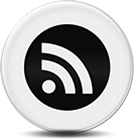Eccentric Exercise: How To Make Maximum Gains From Your Workouts
Eccentric exercise refers to exercise where a muscle is lengthening while it is working
This may be an unusual idea to you. You are most familiar with concentric exercises where muscles contract and shorten. Eccentric exercise -- where the muscle works while it lengthens -- is just the opposite.
There is no good word for this muscular work with lengthening of the muscle. Why? Because when you are working hard, when you are lifting things, your muscles are contracting. But "contract" means to shorten.
What do muscles do?
Muscles do only two things. They shorten. They lengthen. That's it.
Muscles have two ends. Each end is attached to a bone. There's a joint between the bones -- like the knee or the ankle. And when you contract the muscle the bones move.
And when you relax the muscle -- like when you relax your arm and let it drop to your side -- the bones move too.
So is eccentric movement the same as relaxing the muscle?
No, eccentric movements are not relaxing the muscle. Relaxed muscles aren't working. But in eccentric exercise the muscles are working.
Imagine you are lifting a heavy object, perhaps a box filled with books. As you lift it your muscles contract and shorten. This is concentric exercise.
But now you are holding the box of books. What do you do with it? Do you just drop it? Well, you could, but usually you want to set it down somewhere gently.
As you set it down your muscles are still working. You are still holding the box after all. But the muscles are lengthening as well. Your muscles lengthen as you lower the box to the ground. That is an example of eccentric exercise -- the lengthening of muscles while they are still contracting.
So why is this important?
It is important because it is often overlooked when you exercise. Let's say you're lifting weights. You raise up the weight. You feel your muscles getting tight. It feels good and you know that you are building a stronger body.
But then what? Do you just let the weight drop back into place? If you just let the weight drop you are missing out.
When you lower the weight slowly under control -- the eccentric phase of lifting -- your muscles are still working. They're still under tension. And that tension -- that stimulus -- can lead to tremendous muscular development.
Where are you strongest?
And tests have actually shown that your muscles are stronger in eccentric movements than they are in concentric movements. How can that be?
Well, it is this way. Imagine there is a weight that you cannot lift. It is just a little too heavy for you to lift. Did you know that you can probably still hold that weight, that if someone was to help you get it up into position you could hold it? Yes, you could.
And if you had it up there you could probably lower it back down slowly, under control. This is the eccentric movement -- the lowering of the weight under control. That's where you are strongest. The eccentric movement.
Eccentric exercise and athletic training
Athletes use eccentric movements to make their body stronger. They get some help to get the weight up. And then they lower it slowly down. They call these "negatives."
In this way they are able to handle a weight that is heavier than what they can raise on their own. Their body senses the extra stimulus and it causes the muscles to grow.
So when you are exercising don't give up on a movement too soon. Don't just let the weight drop. Control the movement.
Concentrate on the eccentric movement as well as the concentric movement and you can dramatically increase your gains from weight training.
Popular articles:
With weight loss, knowledge is power...
If you know these few truths on this page -- and if you apply them consistently in your life...
If you can't stay on it forever and be fit and healthy and strong -- then it's an extreme diet.
Here's the easy way to ruin any slightest chance you have of losing weight...
Can you eat in restaurants and still respect yourself in the morning?
Calorie density is the difference between vegetable soup and a bagel.
Hidden calories that ruin your waistline...
Will it really help to drink water to lose weight?


